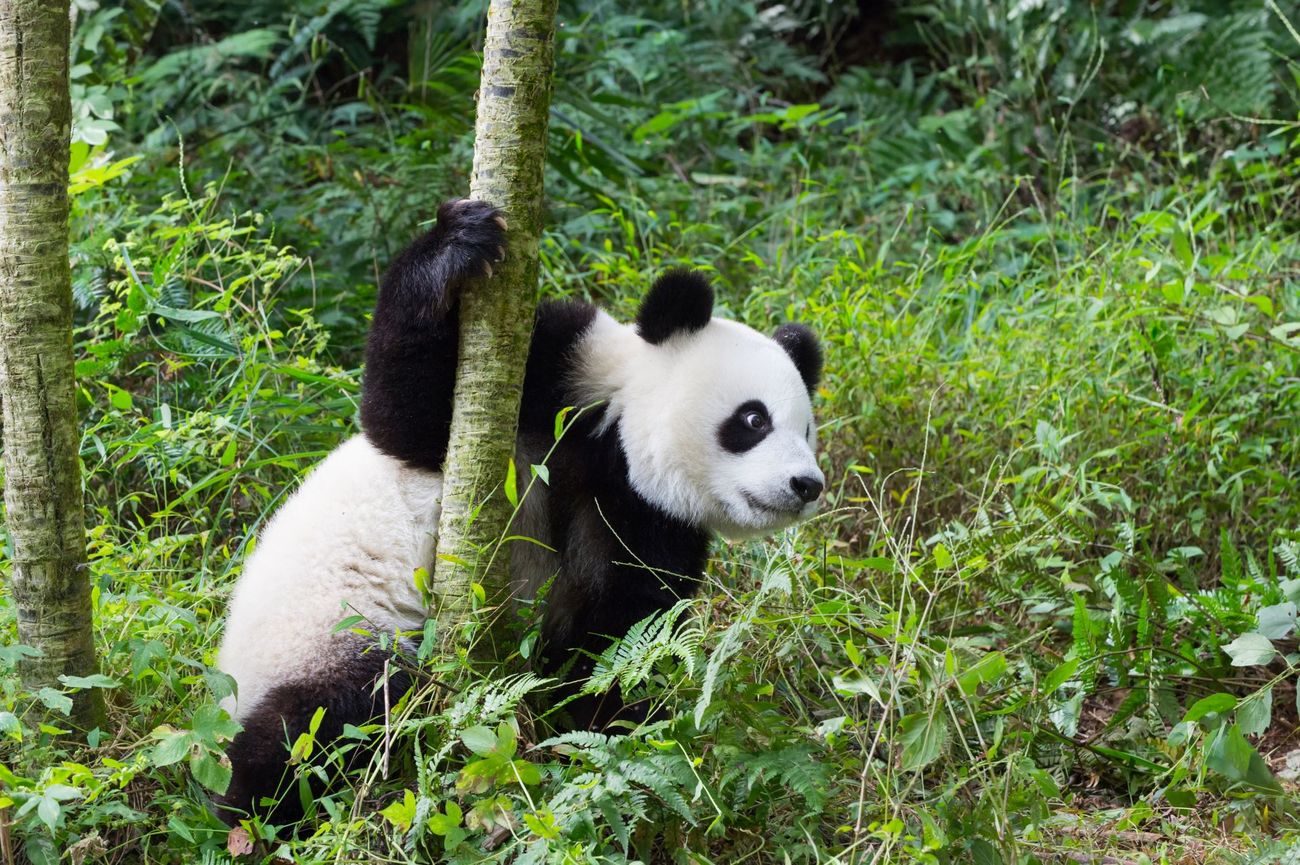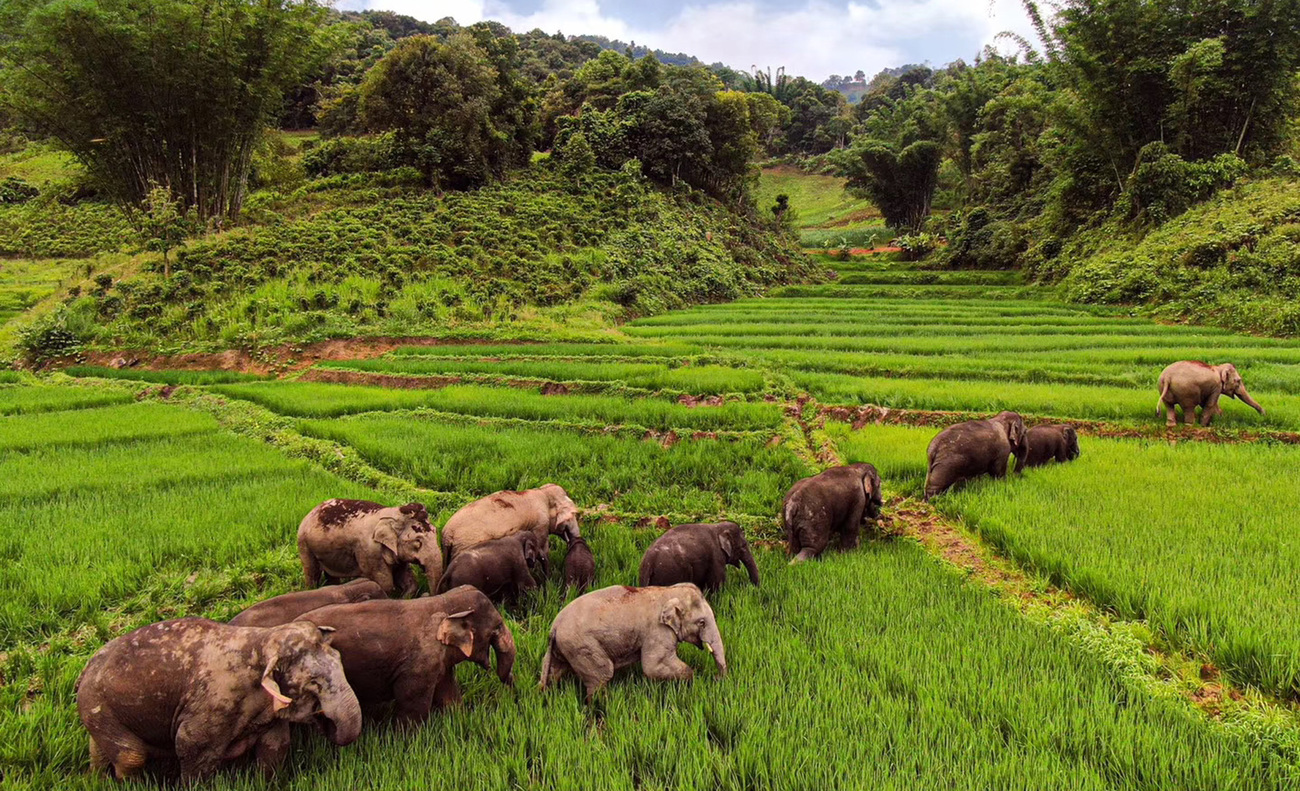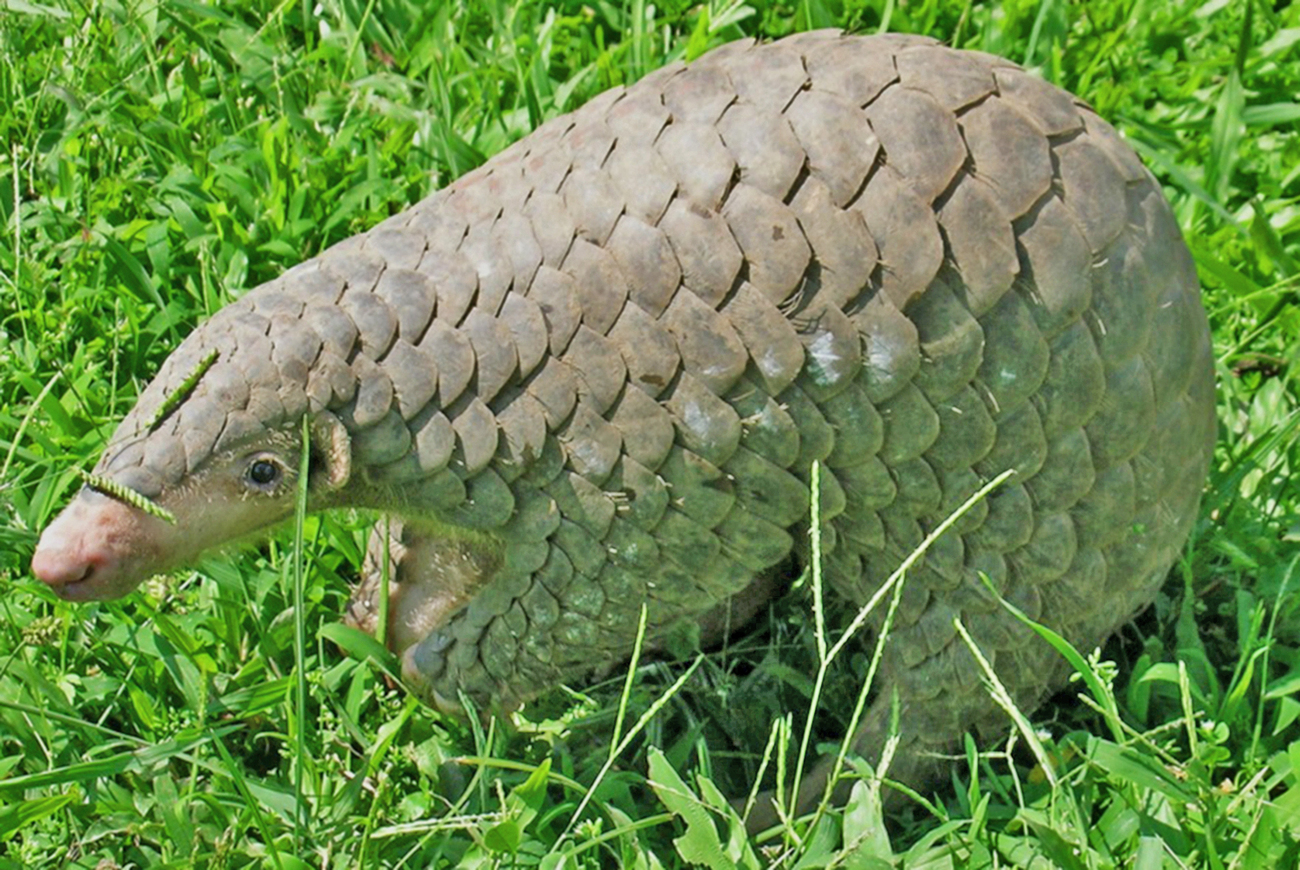Blog
Can animals predict earthquakes and other disasters?
Read moreMost fascinating wildlife and animals of China
As one of the largest countries in the world, it is no surprise that China is home to a huge array of biodiversity, including many unique and endemic species.
With its varied landscapes ranging from snowy mountain ranges to dense forests and a network of rivers, China has an impressive number of wildlife and animals within its borders.

In fact, China is one of the world’s 12 ‘megadiverse’ countries, meaning it’s one of the countries housing the majority of the Earth’s species and has a high number of endemic species. The country is home to an impressive 641 endemic terrestrial vertebrate species, including:
China’s waterways are also home to at least 877 endemic freshwater fish species.
Let’s take a closer look at some of the unique fauna that make China such a haven for biodiversity.

An iconic animal that is often associated with the country, the giant panda (Ailuropoda melanoleuca) is primarily found in the mountainous bamboo forests of central and western China.
Known for its distinctive black and white coat, these giant mammals have captured hearts worldwide. Their monochromatic coloring provides a camouflaging effect—the white fur allows them to blend into snowy surroundings during winter, and the dark black fur helps them disappear in the shade of trees during summer.
The IUCN lists giant pandas as vulnerable. Habitat loss due to deforestation and agricultural expansion poses the biggest threat to these bamboo-munching mammals.
Climate change is also speeding up these challenges, disrupting the balance of their habitats. Thankfully, due to conservation efforts, their population numbers in the wild are increasing—the IUCN estimates there are now 500-1,000 mature individuals found in the forests of China.
The Hainan gibbons (Nomascus hainanus) is a primate species found exclusively in the lush forests of Hainan Island, off the southern coast of China.
With their characteristic black fur and expressive faces, Hainan gibbons live in the tropical rainforests of Hainan and can sometimes be spotted swinging between branches on the island. As social animals, they tend to form family groups. Parents and their offspring can be heard singing in the mornings to mark their territories and enhance family bonding.
Sadly, these gibbons are critically endangered. Though there was a healthy population of around 2,000 individuals in the 1950s, that number has drastically dropped, with scientists now estimating only around 20 to 30 mature adults remain in the wild.
A sharp increase in hunting and habitat loss over the last century has led the Hainan gibbon to become one of the most endangered species in the world. Urgent conservation action is essential to prevent its extinction.

The Asian elephant (Elephas maximus), another emblematic species of China, roams the forested regions of southwestern China within the Yunnan province. Asian elephants inhabit various habitats, including tropical and subtropical forests, grasslands, and even high-altitude mountain forests.
The largest land mammals on the Asian continent, they are known for their intelligence and emotional complexity, just like their African cousins. They are recognised by their large ears, wrinkled skin, and long trunks.
Asian elephants are considered an endangered species. There are fewer than 10,000 remaining in the wild despite an estimated population of 100,000 at the beginning of the 20th century. Their population has been decimated by habitat loss and fragmentation, poaching, and human-wildlife conflict.
IFAW is heavily involved in protecting Asian elephants in China. For more than twenty years, the Asian Elephant Protection (AEP) project has been promoting human-elephant coexistence in an effort to increase and strengthen elephant numbers in the wild.
The Tibetan macaque (Macaca thibetana) is a primate that can be found roaming the rugged terrain of the Tibetan Plateau and adjacent mountainous regions in China.
Characterised by their thick fur coats and expressive faces, these macaques have complex social structures and exhibit intelligent behaviours. Like other primates, Tibetan macaques form tight-knit communities to protect themselves against predators.
Tibetan macaques are classified by IUCN as near threatened with a declining population. Habitat loss and fragmentation are two major threats that have led to their decline, mostly caused by human activities such as deforestation, agriculture, and infrastructure development.
Thankfully, recent measures to limit deforestation in the mountainous regions where Tibetan macaques live have helped stabilise their population numbers.
The South China tiger is a population of the Panthera tigris tigris subspecies, native to southern China. Once referred to as the king of the mountain, the South China tiger is now likely extinct in the wild—it has not been seen by humans since the 1970s. Only a few of them remain living in captivity today.
Historically, these orange-and-black-striped apex predators prowled southern China’s dense forests and mountains. Thanks to relentless hunting, habitat loss, and fragmentation, their population was decimated to the point of probable extinction.
In fact, tigers as an entire species are endangered, and their remaining populations are dwindling quickly across the Asian continent. For example, the Malayan tiger has fewer than 150 individuals remaining in the wild.
IFAW works closely with partners, governments, and local communities to protect tigers. From rescuing and protecting big cats in captivity to introducing the Coalition to End Wildlife Trafficking Online, IFAW is committed to protecting tigers across the globe, with the hope that no more tiger populations will go extinct.

Also sometimes known as Chinese goshawks, the Chinese sparrowhawk (Accipiter soloensis) is a relatively small bird of prey found throughout various forested habitats across China. Sleek and agile, these birds have keen eyesight for spotting and stalking prey.
Like other birds of prey, these fierce predators play an important role in ecosystem management, feeding on small mammals, reptiles, and other birds. The grey birds have an average wingspan of 52 to 62 centimeters (20 to 24 inches), with black wingtips that can be seen from underneath.
On the IUCN Red List, the Chinese sparrowhawk is listed as least concern. However, their population is decreasing, and many other birds of prey in China and the rest of Asia face threats that conservationists are trying to mitigate.
At IFAW’s Beijing Raptor Rescue Center (BRRC), our team has rescued members of 40 raptor species, including Chinese sparrowhawks. Here, they’re nursed back to health with the goal of returning them to the wild.
The Chinese mountain cat (Felis bieti) is a rare and mysterious feline that roams the remote areas of China’s high-altitude regions, including the Tibetan Plateau (where it is endemic) and surrounding mountain ranges.
Its small size means it is sometimes mistaken for a domestic cat at first glance. It has a thick fur coat adapted to withstand the harsh conditions of its alpine habitat. Like many other wildcats, it is a stealthy predator. It has sand-colored fur, faint dark stripes on its face and legs, and black-tipped ears.
Chinese mountain cat populations are classified as vulnerable and are under threat primarily due to habitat loss and fragmentation caused by human activities such as mining, grazing, and infrastructure development.
The red panda (Ailurus fulgens) looks like a cross between a bear, a cat, and a fox. This small, reddish-orange mammal is native to the eastern Himalayas and is found in the bamboo forests of the mountainous foothills.
In the wild, the red panda spends much of its time foraging for bamboo shoots and leaves and feeding on fruit and insects.
With its distinctive colour, masked face, and bushy tail, the red panda has captivated animal lovers around the world. Many see them as cute and think they would make great pets. However, red pandas are wild animals and do not thrive in a captive environment. The illegal pet trade threatens their survival in the wild.
Along with poaching and the illegal pet trade, red pandas are also threatened by habitat loss and fragmentation caused by deforestation, agricultural expansion, and climate change.
Red pandas are listed as endangered by the IUCN. While scientists have made multiple attempts to collect population data on red pandas, the results are not consistent enough to provide accurate numbers.

The baiji (Lipotes vexillifer) is also known as the Yangtze River dolphin or Chinese river dolphin.
With its distinctive long, slender body and pronounced beak, the baiji was once an iconic symbol of the Yangtze River’s rich aquatic biodiversity. However, there is a high likelihood that this dolphin is extinct in the wild, as there have been no confirmed sightings since 2002.
Habitat degradation, pollution, overfishing, and collisions with boats have been among the primary causes of the baiji’s decline. Despite conservation efforts, including habitat protection and captive breeding programs, the species’ numbers dropped past the point of no return.
The loss of the baiji serves as a reminder of the urgent need for conservation action to protect the remaining biodiversity of the Yangtze River basin and other habitats within China and the rest of the world.
Przewalski’s horse (Equus ferus), also known as the Mongolian wild horse or takhi, is the last truly wild horse species in the world. They are the only horses that have never been domesticated.
Native to the steppes and semi-deserts of central Asia, including parts of China and Mongolia, these sturdy equines have a stocky build, upright mane, and dun-colored coat.
Despite facing extinction in the wild in the 20th century due to civil unrest, agricultural expansion, and climate change, concerted conservation efforts have helped reintroduce Przewalski’s horses back into their native habitats. Captive breeding programs and reintroduction initiatives in protected areas have successfully stabilized their population.
The successful recovery of Przewalski’s horse proves that collaborative conservation efforts work. Though they are still classified as endangered, they are still alive in the wild today thanks to conservation efforts.

Pangolins, often dubbed ‘the world’s most trafficked mammal’, are unique creatures known for their distinctive armour-like scales and shy, nocturnal behaviour.
Pangolins face threats of habitat loss and illegal wildlife trade driven by the demand for their scales and meat.
Rampant poaching, habitat loss, and fragmentation have led to a drastic decline in pangolin populations worldwide. As a result, all eight pangolin species are now considered vulnerable, endangered, or critically endangered.
Their name comes from the Malay word pëngulin, which translates to ‘roller’, referencing the pangolin’s ability to curl up into a ball as a defence mechanism.
There are two types of pangolins in China: the Chinese pangolin (Manis pentadactyla) and the Sunda Pangolin (Manis javanica).
The Chinese and Sunda pangolins are both classified as critically endangered. IFAW works with governments, scientists, and other conservation groups to save pangolins and end this poaching crisis.
Thanks to the efforts of IFAW and other conservationists, in 2016, the international trade of pangolins and their body parts for commercial purposes was prohibited worldwide. In June 2020, China uplisted pangolins from Class II state protection to Class I in the List of State Key Protected Wild Animals. China also officially removed the pangolin scale from the 2020 edition of the Traditional Chinese Medicine Pharmacopoeia. We also work with ecommerce companies to take down illegal listings of wildlife and their products.
China’s Government also promised to further strengthen the publicity of pangolin protection, severely crack down on illegal activities such as illegal trading, smuggling, and excessive eating of pangolin and its products, reverse the continuous deterioration of pangolin populations and habitats, and promote the continuous recovery of pangolins.
The Chinese barbet (Psilopogon faber) is a colorful bird native to the forests of southern China.
With a combination of red, yellow, green, and blue feathers, the Chinese barbet is found perched high in the forest canopy, where they forage for fruits, insects, and small vertebrates.
The IUCN classifies the Chinese barbet as least concern. However, their survival is threatened mainly by climate change, which alters the availability of food and nesting sites. Deforestation and habitat loss could also pose significant threats.
If you’re passionate about protecting animals worldwide, consider donating to support our work at IFAW. With your support, we work tirelessly to rescue and rehabilitate wildlife, combat illegal wildlife trade, and advocate for policies that promote conservation and animal welfare.
every problem has a solution, every solution needs support.
The problems we face are urgent, complicated, and resistant to change. Real solutions demand creativity, hard work, and involvement from people like you.
Unfortunately, the browser you use is outdated and does not allow you to display the site correctly. Please install any of the modern browsers, for example:
Google Chrome Firefox Safari